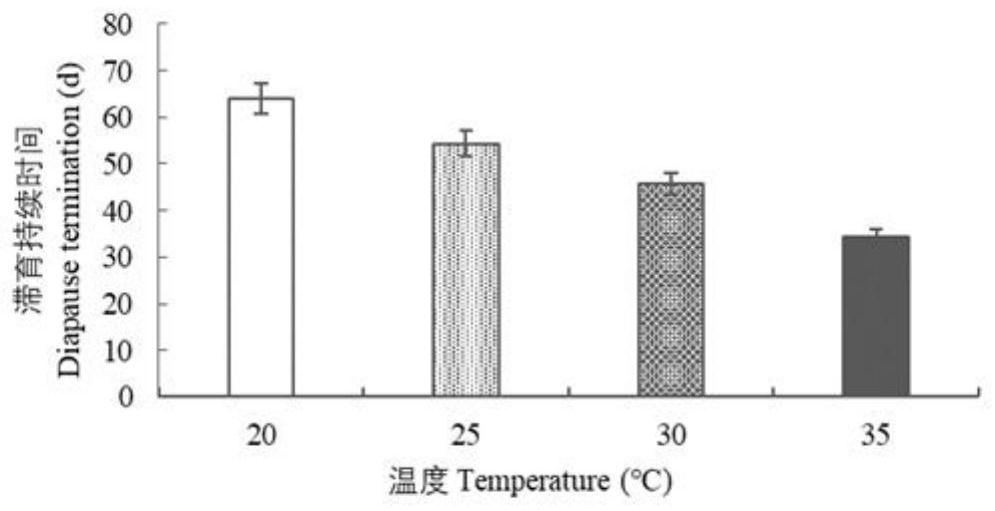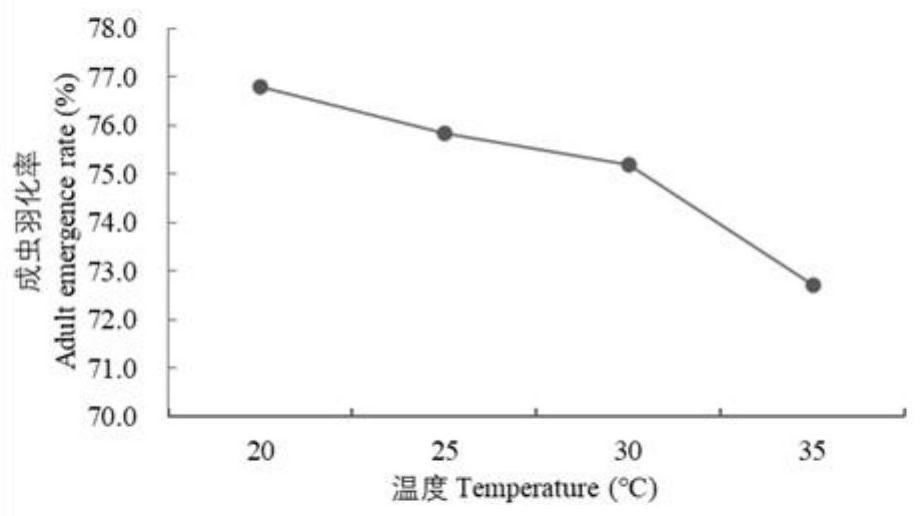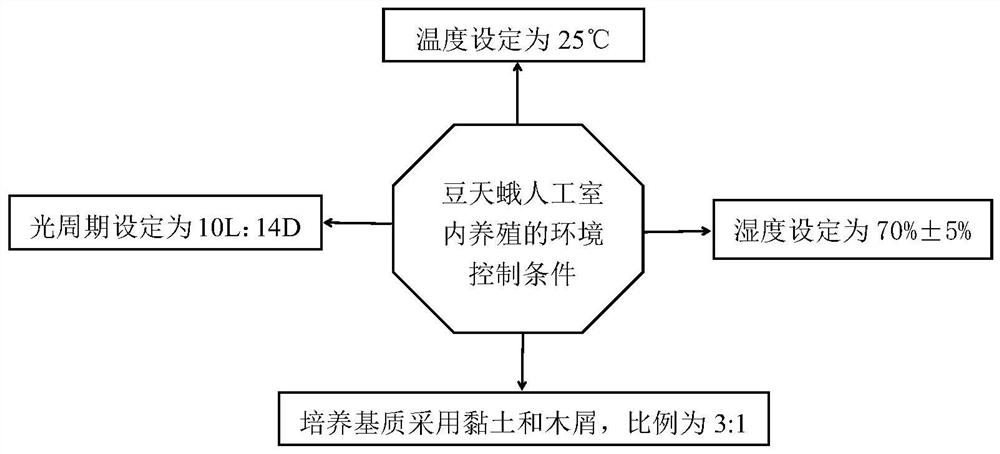Environment control condition for artificial indoor breeding of Clanisbilineata tsingtauica Mell
A technology for controlling conditions and bean hornworm, applied in the field of artificial breeding of resource insects, can solve the problems of long breeding cycle, low benefit, low yield, etc., achieve high pupation rate, improve efficiency, and meet the effects of consumer demand
- Summary
- Abstract
- Description
- Claims
- Application Information
AI Technical Summary
Problems solved by technology
Method used
Image
Examples
Embodiment 1
[0014] Example 1 Effects of Different Temperatures on the Duration of Diapause of Bean Hornmoth
[0015] Under natural conditions, the mature larvae of the hornworm that have just entered the diapause state (the larvae stopped feeding) with the same growth and development were placed in a room with a photoperiod of 10L:14D (simulating the photoperiod of natural conditions) and a humidity of 70%±5%. In the light incubator, 4 different temperature treatments of 20, 25, 30 and 35°C were set respectively, and 100 larvae were treated for each treatment. After the diapause larvae of S. beanus started to move and moved to the surface of the substrate, the diapause state was released. Observe the release of diapause of S. beanus under different treatments, and record the duration of diapause of S. beanus under each treatment.
[0016] The result is as figure 1 , Table 1 shows.
[0017] Table 1 Changes in the duration of diapause of the bean hornworm at different temperatures
[001...
Embodiment 2
[0020] The influence of embodiment 2 different temperatures on bean hornworm pupation
[0021] It is 10L: 14D (the photoperiod of simulating natural conditions) that the bean hornworm after removing diapause is continued in embodiment 1, and humidity is 70% ± 5% light incubator and is cultivated, observes the bean after removing diapause. Differences in the pupation rate, pupae weight, and pupae length of hawkmoth larvae at temperatures of 20, 25, 30, and 35°C.
[0022] The results are shown in Table 2.
[0023] Table 2 Effects of different temperatures on the pupation of Bean Hornmoth
[0024]
[0025]
[0026] Note: The data in the table are the mean ± SE, and different letters after the numbers in the same column indicate that the differences between different levels are significant at the 0.05 level.
[0027] It can be seen that different temperatures have certain effects on the pupation rate, pupa quality and pupa length of Manduca beanus. The pupation rate, pupa...
Embodiment 3
[0028] The influence of embodiment 3 different temperatures on bean hornworm emergence
[0029] Bean hornworm pupae are cultivated in a light incubator with a photoperiod of 10L:14D (simulating the photoperiod of natural conditions) and a humidity of 70%±5%, and the temperature is set at 20, 25, 30 and 35°C for 4 treatments For each treatment, 100 hornworm pupae were cultured, and the changes in parameters such as eclosion rate, single female egg production, female lifespan and male lifespan were observed at different temperatures when other conditions remained unchanged.
[0030] The result is as figure 2 , Table 3.
[0031] Table 3 Effects of different temperatures on the biological characteristics of the adult beetle moth
[0032]
[0033]
[0034] Different ambient temperatures have certain effects on the eclosion rate of bee hornworm adults. As the ambient temperature continued to rise, the adult eclosion rate of H. beanus decreased gradually. In the range of 20...
PUM
 Login to View More
Login to View More Abstract
Description
Claims
Application Information
 Login to View More
Login to View More - R&D Engineer
- R&D Manager
- IP Professional
- Industry Leading Data Capabilities
- Powerful AI technology
- Patent DNA Extraction
Browse by: Latest US Patents, China's latest patents, Technical Efficacy Thesaurus, Application Domain, Technology Topic, Popular Technical Reports.
© 2024 PatSnap. All rights reserved.Legal|Privacy policy|Modern Slavery Act Transparency Statement|Sitemap|About US| Contact US: help@patsnap.com










